Somehow, soccer’s summer transfer window ends up being almost as exhausting — or more so — than soccer’s nine-month domestic season. You are confronted with a fire hose of rumors, innuendo and actual fact to the point that it becomes difficult to separate wheat from chaff. It also becomes pretty easy to forget what actually matters. Should your team be linked with Expensive Striker A? What are they doing to address their needs at [insert less glamorous position here]?
I like to occasionally step back, then, and remind myself of what teams were actually good and bad at last season and where even the best teams could actually stand to improve.
So let’s pause the rumor machine for a moment and take stock. For 17 of Europe’s biggest clubs, let’s look specifically at what their biggest statistical weaknesses were last season, what those weaknesses suggest they needed to address, and whom they have added and lost this summer to date. How have they addressed needs? Where do they still have work to do?
We start, of course, with the richest and most free-spending league in Europe, but we’ll touch on each of the traditional Big Five leagues.
English Premier League
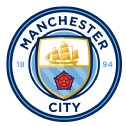 Manchester City
Manchester City
Biggest need (and the stats behind it): defensive stability. Weaknesses are relative when you’re the best team (and one of the richest) in Europe, of course — Pep Guardiola’s team scored the most goals and allowed the fewest in the Premier League while winning the treble. But while they were more adaptable than ever last year and found themselves more comfortable without the ball, they still ranked only ninth in the league in xG allowed per shot. Opponents generated at least 0.3 xG on 8.5% of their shots (12th in the league).
City, of course, allowed fewer shots than anyone, but it’s always going to be about snuffing out quick transitions, and they can always look to improve further in that regard.
– Stream on ESPN+: LaLiga, Bundesliga, more (U.S.)
Who they’ve lost: Midfielder Ilkay Gundogan (Barcelona). They could end up losing Bernardo Silva, too, which would deprive them of maybe their two smartest and most versatile talents.
Who they’ve added: Midfielder Mateo Kovacic (Chelsea). The 29-year-old is an almost Toni Kroos-style ball progressor from deeper positions and he’s still, at worst, average in terms of defensive chops. Trading Gundogan for Kovacic might be a net loss from an offensive perspective, but a slight net gain defensively.
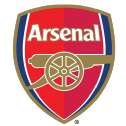 Arsenal
Arsenal
Biggest need (and the stats behind it): better pressure up front and better pivot play. Mikel Arteta’s Gunners fit the profile of your typical ball-dominant team, creating far more opportunities than opponents but giving up a few too many easy shots at times. They ranked 15th in xG allowed per shot, and opponents attempted 54% of their shots from inside the box (17th).
Two other areas for improvement: Only 21% of their ball recoveries came from attackers (15th in the league) and they scored the fewest goals on what I call “transition possessions” — possessions that start outside the attacking third and last fewer than 20 seconds — of anyone in England’s top five. Interpretations might vary, but to me, that says they could use a bit more pressure at the top of their press, and they could use better pivot play from their defensive midfielder.
Who they’ve lost: Midfielder Granit Xhaka (Bayer Leverkusen). They could also soon say goodbye to defensive midfielder Thomas Partey, which seems like a bit of acknowledgment of a need for improvement there.
Who they’ve added: Attacking midfielder Kai Havertz (Chelsea), and they’re evidently close to officially announcing deals for West Ham defensive midfielder Declan Rice and Ajax defender Jurrien Timber. Evidently Arteta sees the versatile Havertz — who’s always at risk of becoming the proverbial “jack of all trades, master of none” — as a Xhaka replacement in midfield. If the role fits him, that should increase Arsenal’s pressing abilities.
Rice could obviously provide a huge upgrade in the pivot role. They were expensive additions, but they could be the right ones.
Gab Marcotti and Julien Laurens debate how Declan Rice will fit into Mikel Arteta’s plans if he joins Arsenal.
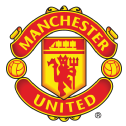 Manchester United
Manchester United
Biggest need (and the stats behind it): midfield stoppers and a target up front. United’s defense was more passive than Erik ten Hag would like — they were ninth in the league in shots allowed per possession and 13th in combined progressive carries and passes allowed per touch. That tells me they were not offering enough resistance in the midfield.
Meanwhile, in attack they ranked ninth in xG per shot, and only 46% of their shots were attempted inside the box (a dreadful 19th). They also averaged just 0.79 points per game in matches in which they trailed, worst of any team in England’s top five. They struggled to force the issue on the offensive end, and they very much lacked star power at the center-forward position.
Who they’ve lost: Goalkeeper David de Gea (free agent/no club), forward Wout Weghorst (end of loan), midfielder Marcel Sabitzer (end of loan). Rumors suggest players such as midfielder Fred and winger Jadon Sancho could also end up leaving, but de Gea’s the only starter to have officially left thus far.
Who they’ve added: Midfielder Mason Mount (Chelsea). Mount is a high-potential attacking midfielder … and in no way a midfield stopper. Put another way: United has not yet addressed either of its biggest needs and also now needs a goalkeeper. Inter Milan’s Andre Onana could be on his way to Manchester soon, and he better fits what Ten Hag needs from the goalkeeper position, but United still has a lot of work to do this summer.
 Newcastle United
Newcastle United
Biggest need (and the stats behind it): further depth. Honestly, it was difficult to come up with a cohesive theme behind Newcastle’s random weaknesses as they finished in England’s top four for the first time in 20 years. They ranked only 12th in their percentage of shots on target, so they need better shooting? They were 13th in their percentage of sequences with at least 10 passes, so they need better possession midfielders? They were 16th in average possession width, so they need more structure on the wings?
With new ownership and bigger spending potential, Newcastle is the nouveau riche of the Premier League, and they’re still in the process of building a warship-level squad like City and others have. In the absence of a clear need, we’re just going to say they need more and more high-level players, especially with Champions League play on the horizon.
Who they’ve lost: No one of note.
Who they’ve added: Midfielder Sandro Tonali (AC Milan). A solid ball progressor from a pretty defensive position, Tonali certainly fits the “more high-level players” need. At €64 million, he also occupied a decent chunk of Newcastle’s transfer budget unless the club can increase revenue by moving some players. The club has a bit of a financial fair play issue to battle at the moment.
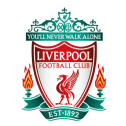 Liverpool
Liverpool
Biggest need (and the stats behind it): The midfield needs to exist again … and maybe there’s a center-back upgrade on the horizon? Like City, Liverpool’s fate tends to hinge on whether opponents are taking decent shots or great ones. Liverpool allowed fantastic scoring opportunities in 2022-23. They ranked a distant 20th in xG allowed per shot, and 13.8% of opponents’ shots were worth at least 0.3 xG, easily the most in the Premier League. For good measure, they also ranked 20th in the percentage of opponents’ shots occurring in the box and percentage of opponents shots attempted with under two defenders between shot and goal.
Jurgen Klopp’s high-risk pressing and high defensive line can be magical when tuned just right, and it can result in countless defensive breakdowns if things aren’t properly balanced. An aging and often injured midfield — plus an aging Virgil van Dijk at center-back — assured that things weren’t tuned right for most of the season, and they fell out of the top four because of it.
Who they’ve lost: Forward Roberto Firmino (Al Ahli); attacking midfielder Fabio Carvalho (loan to RB Leipzig); midfielders Naby Keita (Werder Bremen), James Milner (Brighton) and Alex Oxlade-Chamberlain (free agent/no club). Most of the departures are of the “past his prime, step down in competition” variety, but the departures have also freed up some salary.
Who they’ve added: Midfielder Alexis Mac Allister (Brighton) and attacking midfielder Dominik Szoboszlai (RB Leipzig). We can debate whether two huge additions is enough, but Mac Allister and Szoboszlai are indeed huge additions.
Mac Allister is both a stellar stopper and pivot man from a more defensive position, and Szoboszlai is a bright attacker and high-level set-pieces guy. They will enter their primes together in the coming years, and they drastically alleviate the need for full-season efforts from older players such as Jordan Henderson and Fabinho.
The ESPN FC crew debate how new Liverpool signing Dominik Szoboszlai will fit in at Anfield.
 Tottenham Hotspur
Tottenham Hotspur
Biggest need (and the stats behind it): actual possession players. When you build a squad for managers such as Jose Mourinho and Antonio Conte, who deploy a more reactive, counter-attacking style, and then you switch to a more possession-friendly manager in Ange Postecoglu, it can be a pretty clunky transition. And you can make a solid case that Spurs were far too reactive last year: They ranked 14th in high turnovers forced, 14th in goals from high turnovers, 15th in the percentage of their possessions starting in the attacking third, 16th in opponents’ total touches in the attacking third and 12th in opponents’ touches in the box. They ceded the pitch to their opponents.
Plus, in a heavy-pressing environment, they struggled in buildup: They ranked 14th in opponents’ high turnovers forced, 18th in goals allowed from high turnovers and 19th in percentage of opponents’ possessions starting in the attacking third. Turning this unit into a proper, build-from-the-back-and-press-high squad might take a while.
Who they’ve lost: Midfielder Harry Winks (Leicester City), winger Lucas Moura (free agent/no club), center-back Clement Lenglet (end of loan). They’re likely saying goodbye to goalkeeper Hugo Lloris, too. None of this is damning, though they obviously have a huge decision to make when it comes to forward Harry Kane.
Their talismanic forward has long appeared unlikely to re-sign when his contract expires in summer 2024, and Bayern is the latest suitor to offer a big transfer fee. They could use the revenue to add the number of pieces they need, but he was basically the entire Spurs attack last season.
Who they’ve added: Attacking midfielder James Maddison (Leicester City), winger Manor Solomon (Shakhtar Donetsk), goalkeeper Guglielmo Vicario (Empoli). Maddison is a creative force that Spurs have lacked for a while, and Solomon is primarily a solid crosser. That’s fine, but their rebuild requires quite a bit more.
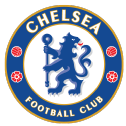 Chelsea
Chelsea
Biggest need (and the stats behind it): an actual transition game. And an attacking plan. You know, little things like that.
Chelsea wer far worse than any team this rich should ever be. They added as many pieces as they possibly could, and none fit together. The defense remained decent (though not great), but the attack was an absolute disaster. They ranked 17th in xG per shot, 11th in their percentage of shots coming from the box and 17th in percentage of shots blocked. They actually pressed well — they ranked fifth in open-play high turnovers forced — but they somehow ranked only 10th in shots from high turnovers, 16th in goals from high turnovers and 20th in goals from transition possessions. That all speaks to a complete lack of urgency and ability to take advantage of opportunities.
The Blues need creativity and execution. New manager Mauricio Pochettino could help with the latter; the former might require new pieces.
Who they’ve lost: Attacking midfielder Kai Havertz (Arsenal); forward Joao Felix (end of loan); winger Christian Pulisic (AC Milan); midfielders Mason Mount (Manchester United), Mateo Kovacic (Manchester City), N’Golo Kante (Al Ittihad), Ruben Loftus-Cheek (AC Milan) and Denis Zakaria (end of loan) and full-back Cesar Azpilicueta (Atletico Madrid). They needed to de-bloat the squad and the payroll, and they’re probably not done, but some of the more creative players on the team have been lost along the way, too.
Who they’ve added: Forwards Christopher Nkunku (RB Leipzig), Nicolas Jackson (Villarreal) and Romelu Lukaku (end of loan), plus winger Callum Hudson-Odoi (end of loan). Nkunku seems like a perfect fit for Pochettino’s aggressive style, and like Nkunku, Jackson is an exciting dual-threat in terms of both passing and shooting. One can see the logic of adding these two, but with all the losses, they’ve now got a midfield to reconstruct.
Spanish LaLiga
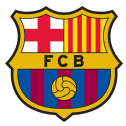 Barcelona
Barcelona
Biggest need (and the stats behind it): defensive disruption and maybe another finisher. The financial risks Barcelona took on last summer — selling off portions of future revenue in the name of spending more in 2022-23 — made merely winning LaLiga, with no commensurate success in Europe, feel disappointing. But they were definitely Spain’s best team, one that scored the second-most goals in the league and allowed by far the fewest.
Strangely, the biggest statistical weaknesses might have been in defense, where an otherworldly season from goalkeeper Marc-Andre ter Stegen papered over quite a few cracks. They allowed the fewest shots per possession but ranked seventh in xG allowed per shot, 13th in percentage of opponents’ shots blocked and 18th in percentage of opponents’ shots coming in the box. They probably need to stiffen a bit in that regard. They could also stand to shoot a bit better — they ranked first in average xG per shot but were only 11th in percentage of shots on target. Robert Lewandowski did his job in that regard, but others did not.
Julien Laurens and Nedum Onuoha discuss Ilkay Gundogan’s decision to join Barcelona on a free transfer.
Who they’ve lost: Defensive midfielder Sergio Busquets (Inter Miami), fullback Jordi Alba (no club). That could obviously impact their buildup play.
Who they’ve added: Midfielder Ilkay Gundogan (Manchester City), center-back Inigo Martinez (Athletic Club). Gundogan will keep Barca’s soccer IQ and buildup quality high, but he’s only going to help so much with last year’s relative weaknesses. That said, adding an Athletic Club player when you need stiffer defense is all sorts of logical.
 Real Madrid
Real Madrid
Biggest need (and the stats behind it): a center-forward (and, as with others, a midfield refresh). Losing Karim Benzema is obviously going to leave a giant hole up front, but you can make a solid case that Real Madrid already had a hole last season. Benzema was injured quite a bit and less effective when he was in the lineup, and Los Blancos relied far too heavily on Vinicius Junior’s one-on-one abilities to create opportunities. They ended up ranking 18th in LaLiga in percentage of shots in the box and 20th in percentage of shots blocked.
They also ranked 15th in progressive pass percentage, and both 17th in open-play cross attempts and 20th in cross completion rate. On top of that, they were also 15th in ball recoveries in the middle third. Vini Jr.’s prowess masked quite a few deficiencies.
Who they’ve lost: Forward Karim Benzema (Al Ittihad), winger Marco Asensio (PSG). That obviously only furthers the need for a refresh.
Who they’ve added: Midfielders Jude Bellingham (Borussia Dortmund) and Arda Guler (Fenerbahce), forward Joselu (Espanyol), left-back Fran Garcia (Rayo Vallecano). At his best, Bellingham fills needs in both midfield and attack, and if he helps with creativity, then the fact that Joselu is a rather one-dimensional forward — be big, win headers — could work out alright.
Joselu, 33, is a stopgap of sorts while the club waits (again) to see what will happen over the next year with Kylian Mbappe, but he did score 17 goals for a poor Espanyol team last year. He’s a pretty good stopgap.
Watch Real Madrid’s freshest signing in action, as the 18-year-old attacking midfielder Arda Guler arrives in the Spanish capital from Fenerbahce.
 Atletico Madrid
Atletico Madrid
Biggest need (and the stats behind it): better buildup play. From mid-January on, Atletico was the best team in LaLiga, and Antoine Griezmann was their best player. This team’s ceiling appears quite high once again, and it could get even higher if Atleti can cut out the errors in the back. They allowed opponents to begin 9% of their possessions in the attacking third (sixth most) and make 5.9 ball recoveries per match there (most). It drastically tilted the field against them, even when you account for manager Diego Simeone’s general counter-attacking preferences.
Who they’ve lost: Midfielder Geoffrey Kondogbia (Marseille). He was a decent ball progressor but played only 1,000 minutes in league play.
Who they’ve added: Fullbacks Cesar Azpilicueta (Chelsea) and Javi Galan (Celta de Vigo), center-back Caglar Soyuncu, forward Joao Felix (end of loan). The addition of Azpilicueta certainly speaks to Atletico understanding their needs. Though he is 33 years old, he remains a sturdy buildup piece. Soyuncu, meanwhile, was a solid passer himself before falling out of favor at Leicester last season.
If Simeone unlocks Soyuncu’s previous form, Atleti’s buildup play could improve dramatically this season. Considering how impressive they already were in attack, that could mean great things.
German Bundesliga
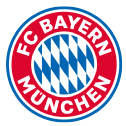 Bayern Munich
Bayern Munich
Biggest need (and the stats behind it): stability in the back and a better target man. Bayern was still mostly Bayern in 2022-23. Their form at the World Cup break might have been the best in Europe, and from an xG perspective they were a bit unlucky to be in such a tight title race down the stretch. That said, they were still self-destructive at times: Only three Bundesliga teams allowed opponents to start a higher percentage of possessions in the attacking third, only one conceded more penalties, and only five gave up more goals in the final 30 minutes of matches. There was a composure issue that needed addressing, particularly at the back.
There was also the matter of the Robert Lewandowski-sized hole up front. Bayern ranked first in goals and shots per possession, as usual, but they were only sixth in xG per shot and 13th in the percentage of their shots that were blocked. Following Lewandowski’s departure, the club tried to get away with filling the hole with 33-year-old Eric Maxim Choupo-Moting and 17-year-old Mathys Tel, but Choupo-Moting was injured too much and Tel was, well, too 17 years old. It was costly at random times.
Who they’ve lost: Center-back Lucas Hernandez (PSG), right-back Joao Cancelo (end of loan). They had to play without Hernandez for the second half of the season following his ACL injury, and they didn’t handle it all that well.
Who they’ve added: Midfielder Konrad Laimer (RB Leipzig), full-back Raphael Guerreiro (Borussia Dortmund), center-back Kim Min-jae (Napoli). Kim and Guerreiro (who could also play in midfield) should help to cut down the buildup glitches in the back, perhaps drastically. Adding Laimer doesn’t really help in this regard, but he’s a useful chaos agent.
Oh, and none of these three are forwards. Bayern is evidently pushing hard to add Kane, but as with Manchester City’s advances a couple of years ago, Tottenham has resisted to date. If they’re genuinely willing to lose him on a free transfer next year, Bayern’s plans will be thwarted. And as with last summer, when they toed the Erling Haaland waters and failed, it’s hard to tell if the Bavarians actually have a backup plan or not.
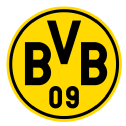 Borussia Dortmund
Borussia Dortmund
Biggest need (and the stats behind it): midfield disruption. That’s a pretty common theme among the teams on these lists, but when BVB had issues last season — issues that weren’t caused by injury or health issues, anyway — it usually stemmed from opponents having too easy a path toward goal. BVB ranked ninth in shots allowed per possession and, despite plenty of big options in central defense, 17th in cross completion rate allowed.
They were also 11th in the percentage of their possessions starting in the middle third. With Bellingham spending more time in attack, it meant that BVB was better in the attacking third (and better applying defensive pressure there, too), but it occasionally seemed to mean a free path for opponents in the other direction.
Who they’ve lost: Midfielders Jude Bellingham (Real Madrid) and Mahmoud Dahoud (Brighton), full-back Raphael Guerreiro (Bayern Munich). Dahoud was injured for much of the season, but Bellingham and Guerreiro were obviously key pieces and enhanced the need for a midfield reset.
Who they’ve added: Midfielder Felix Nmecha (Wolfsburg), fullback Ramy Bensebaini (Borussia Monchengladbach). Bensebaini is more of a defense-minded full-back and a safe set of hands. That alone could help in preventing as many open crosses, but Nmecha will face a lot of pressure to not only help to fill the attacking void left by Bellingham but also raise BVB’s counter-pressing game.
Dortmund was long linked with Ajax defensive midfielder Edson Alvarez, which made perfect sense considering their needs, but they’ve evidently pulled out of that race. We’ll see which direction they go instead.
Italian Serie A
 Napoli
Napoli
Biggest need (and the stats behind it): a little bit more shot quality. It feels wild to say considering the star power that the attacking duo of Victor Osimhen and Khvicha Kvaratskhelia generated over the last year, but the closest thing Napoli had to a statistical weakness during its 2022-23 Scudetto season came in attack.
While they allowed the fewest goals, second-fewest shots per possession and third-lowest xG per shot in defense, their attack ranked first in goals, first in shots per possession … and only seventh in xG per shot. Only 7% of their shots were worth 0.3 xG or more, and they won the league at least in part by overachieving their xG figures by 13%. Osimhen and Kvaratskhelia overachieved theirs by 27%. (Regression to the mean struck in the Champions League, where they scored one goal from shots worth 3.6 xG in their quarterfinal defeat to AC Milan.)
Maybe that specific duo can keep up that level of finishing, but (A) maybe they can’t, and (B) Osimhen is still the subject of quite a few transfer rumors, even though it would cost a massive amount to get Napoli to let go of him.
Who they’ve lost: Defender Kim Min-jae (Bayern Munich). That’s it so far, but Kim was obviously a huge part of their defensive stability, and his departure creates a new hole to address.
Who they’ve added: No one of note. They are evidently close to landing Hellas Verona full-back Davide Faraoni, but in a likely backup role. If no one lands Osimhen, this could end up being a pretty quiet summer.
 Inter Milan
Inter Milan
Biggest need (and the stats behind it): more creativity in midfield? More variety in the forward tandem? Inter was likely the second-best team in Italy last year, finishing third in Serie A but pairing that with a run to the Champions League final. They scored the second-most goals in their league, and while their defense was a bit passive, they gave opponents the fewest high-level chances.
The defense could stand to improve, especially if or when goalkeeper Andre Onana leaves for Manchester United, but for now we’ll focus on a different issue. While Inter attempted the league’s second-most shots per possession (and a high percentage in the box), they ranked fifth in xG per shot and only 11th in on-target percentage. A whopping 22% of their shots were headers, and they attempted the most open-play crosses in the league. They suffered from predictability at times despite the fact that they regularly rotated between four forwards (Lautaro Martinez, Edin Dzeko, Romelu Lukaku and Joaquin Correa).
Who they’ve lost: Forwards Dzeko (Fenerbahce) and Lukaku (end of loan), midfielder Marcelo Brozovic (Al Nassr), defender Milan Skriniar (PSG). That’s a huge loss of veteran presence, but it’s also an opportunity to refresh a bit, especially up front.
Who they’ve added: Forward Marcus Thuram (Borussia Monchengladbach), midfielder Davide Frattesi (Sassuolo, loan). Thuram is basically a Dzeko/Lukaku replacement. Over four seasons in the Bundesliga, 25% of his shots were headers, and while there can be obvious value in that, it doesn’t appear at the moment that Inter is exploring possibilities for variety up front. We’ll see what additional moves they make if Onana or others leave.
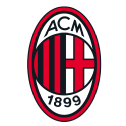 AC Milan
AC Milan
Biggest need (and the stats behind it): sturdier central defense, and maybe another wide attacking option. Milan squeaked into the top four thanks to Juventus’ point deduction and a late league hot streak. Their ceiling was high, especially in attack, but there were issues for the 2021-22 Scudetto winners.
For one, they gave up high-quality chances in transition; they finished the season 12th in xG allowed per shot, 14th in the percentage of opponents’ shots worth at least 0.3 xG and 16th in save percentage (Mike Maignan was amazing in the Champions League but merely average in Serie A). They were also 18th in goals allowed from set pieces. There were too many centralized breakdowns, which speaks to a need for improvement in defense, either through new additions or solid development from young center-backs Fikayo Tomori, Pierre Kalulu and Malick Thiaw.
They also lacked width in attack — they were 13th in average possession width and 14th in their average number of switches of play. That’s fine as long as you’re dominating in the middle, but with central attacking midfielder Brahim Diaz moving back to Real Madrid, now’s the time for some variety and width.
Who they’ve lost: Midfielders Sandro Tonali (Newcastle) and Brahim Diaz (end of loan), forward Zlatan Ibrahimovic (retirement), full-back Sergino Dest (end of loan). Losing Tonali and Diaz completely reshapes the midfield and creates a new need.
Who they’ve added: Wingers Christian Pulisic (Chelsea, any minute now) and Luka Romero (Lazio), midfielder Ruben Loftus-Cheek (Chelsea). Romero, 18, was a signing for the future (and a tantalizing one at that), but the main additions right now are the Chelsea transplants. Pulisic could be excellent if he stays healthy, but Loftus-Cheek isn’t the only midfielder they now need. And I guess that means they’re just rolling the dice with the same defenders?
 Juventus
Juventus
Biggest need (and the stats behind it): a brand new midfield. Juve would have finished fourth in Serie A if not for their point deduction, but there were flaws in quite a few places. And now they have to address them without European revenue.
If you squint, most of the issues could be focused on a poor midfield. They ranked 15th in ball recoveries in the middle third, they were sixth in combined progressive carries and passes per touch, and they were a dreadful 15th in opponents‘ combined progressive carries and passes per touch. Their transition attack was mostly nonexistent, too. Even with a solid contract year from Adrien Rabiot (11 goals, five assists in all competitions), Juve just didn’t seem to get what they needed from their midfield, and manager Max Allegri thought little enough of players like Weston McKennie, Denis Zakaria and Arthur Melo that they all got loaned out.
Who they’ve lost: Forward/winger Angel Di Maria (Benfica SL), wing-back Juan Cuadrado (free agent/no club). Rabiot looked like he might be on the move, too, but it appears he’s close to signing a contract extension instead.
Who they’ve added: Winger Tim Weah (Lille) and the return of lots of loanees. The next seven weeks or so will likely be quite busy for Juve, in terms of players both coming and going. They have yet to really address any of last season’s needs, and quite a few players are linked to moves elsewhere. If we were handing out grades, they get an “Incomplete” thus far.
French Ligue 1
 Paris Saint-Germain
Paris Saint-Germain
Biggest need (and the stats behind it): a pressing forward and much sturdier defense. PSG won yet another Ligue 1 title in 2023, but with an awfully frail team, especially in defense. (Such frailty was punished in the Champions League.) They ranked 16th in the league in shots allowed per possession — absurdly passive for a team with such financial advantages — and ninth in the percentage of opponents’ shots worth at least 0.3 xG. A solid performance from goalkeeper Gianluigi Donnarumma prevented defensive doom and allowed them to win enough matches to win the league. The defensive frailty was team-wide. While they didn’t get enough from their back line, a midfield that was breaking in newer, younger pieces (Vitinha, Nuno Mendes) struggled at times, and with Kylian Mbappe, Neymar and Leo Messi up front, they had no pressing presence from their forwards. They ranked 18th in the percentage of their ball recoveries coming from attackers. That put too much pressure on the midfield and threw off the entire defensive structure. (It also helped them to score a lot of goals, obviously.) Who they’ve lost: Winger Leo Messi (Inter Miami), center-back Sergio Ramos (free agent/no club). That will certainly drop the club’s average age, at least. We’ll see if they find a taker for Neymar’s huge contract. And of course, the specter of Mbappe’s potential departure looms over everything once more. Who they’ve added: Winger Marco Asensio (Real Madrid), attacking midfielder Lee Kang-in (Mallorca), defensive midfielder Manuel Ugarte (Sporting CP), center-backs Lucas Hernandez (Bayern) and Milan Skriniar (Inter Milan). Plus, players such as forward Mauro Icardi and midfielder Leandro Paredes are back from loan (for now, at least). Asensio probably won’t help a ton in the pressing department, though the combination of Ugarte, Hernandez and Skriniar — especially the first two — could help immensely in terms of defensive stability.



